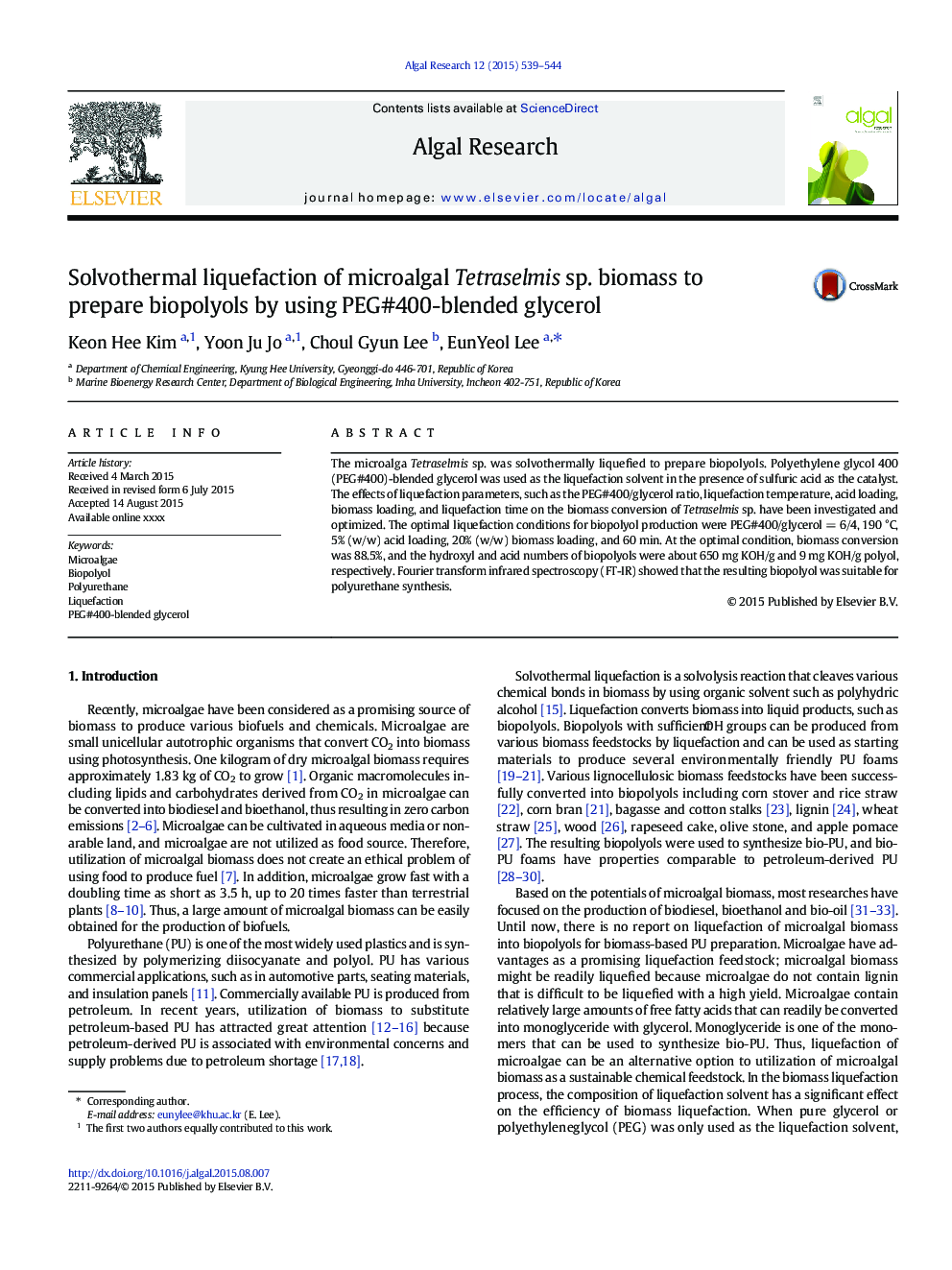| Article ID | Journal | Published Year | Pages | File Type |
|---|---|---|---|---|
| 8087940 | Algal Research | 2015 | 6 Pages |
Abstract
The microalga Tetraselmis sp. was solvothermally liquefied to prepare biopolyols. Polyethylene glycol 400 (PEG#400)-blended glycerol was used as the liquefaction solvent in the presence of sulfuric acid as the catalyst. The effects of liquefaction parameters, such as the PEG#400/glycerol ratio, liquefaction temperature, acid loading, biomass loading, and liquefaction time on the biomass conversion of Tetraselmis sp. have been investigated and optimized. The optimal liquefaction conditions for biopolyol production were PEG#400/glycerol = 6/4, 190 °C, 5% (w/w) acid loading, 20% (w/w) biomass loading, and 60 min. At the optimal condition, biomass conversion was 88.5%, and the hydroxyl and acid numbers of biopolyols were about 650 mg KOH/g and 9 mg KOH/g polyol, respectively. Fourier transform infrared spectroscopy (FT-IR) showed that the resulting biopolyol was suitable for polyurethane synthesis.
Related Topics
Physical Sciences and Engineering
Energy
Renewable Energy, Sustainability and the Environment
Authors
Keon Hee Kim, Yoon Ju Jo, Choul Gyun Lee, EunYeol Lee,
